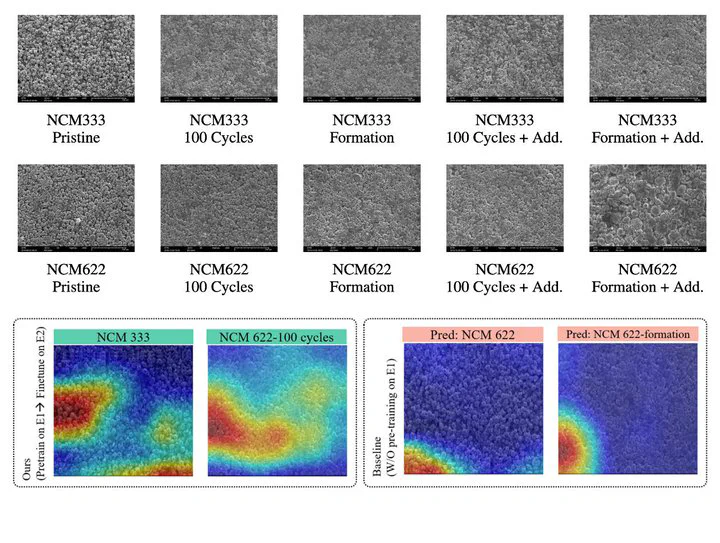Bridging data-rich and data-poor domains on Lithium-Ion Battery via Scanning Electron Microscopic data through Convolutional Neural Network Transfer Learning
 AI Can See Through These SEM Images – NeurIPS 2025 AI4Mat Workshop
AI Can See Through These SEM Images – NeurIPS 2025 AI4Mat WorkshopAbstract
Scanning Electron Microscopy (SEM) imaging offers a powerful yet underutilized tool for diagnosing the state of lithium-ion battery cathodes. However, deep learning models for SEM-based state prediction often suffer from limited training data and domain shifts, particularly when functional electrolyte additives are introduced. In this work, we propose a two-stage transfer learning framework using an EfficientNet-B0 backbone to robustly classify cathode SEM images across nine classes defined by material composition (NCM333, NCM622, NCM811) and aging state (pristine, formation-aged, 100 cycles). Our method first pretrains the model on a data-rich source domain of additive-free samples, then fine-tunes it on a smaller target domain containing additive-induced variations. To address class imbalance, we compare targeted oversampling and weighted loss strategies. Experimental results show that our framework consistently outperforms pretraining-only and fine-tuning-only baselines, achieving over 0.98 accuracy and F1 scores for domain-shifted classes. Qualitative analysis using Grad-CAM further confirms that the model captures physically meaningful features, such as particle cracking and boundary degradation. These findings demonstrate the effectiveness of transfer learning in reducing data scarcity and domain shift in SEM-based battery diagnostics, providing a practical solution for automated analysis in next-generation battery development.